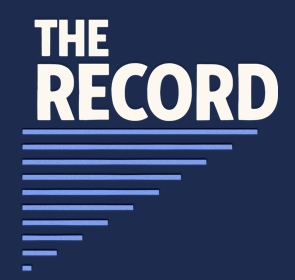Seattle Before the iPhone #3 - Greg Robbins
This episode was recorded 16 May 2013 live and in person at Omni’s offices overlooking Lake Union in Seattle.
You can download the m4a file or subscribe in iTunes. (Or subscribe to the podcast feed.)
Greg Robbins is Graphing Calculator co-author (a story you should already know about, that we don’t go over again) and has done such diverse things as bringing translucency to the Mac OS Drag Manager (way back in the ’90s), and writing an open source Objective-C library for Google Data APIs. You can follow Greg on Twitter.
This episode is sponsored by Squarespace. Easily create beautiful websites via drag-and-drop. Get help any time from their 24/7 technical support. Create responsive websites — ready for phones and tablets — without any extra effort: Squarespace’s designers have already handled it for you. Get 10% off by going to http://squarespace.com/therecord. And, if you want to get under the hood, check out their APIs at developers.squarespace.com.
This episode is also sponsored by Microsoft Azure Mobile Services. Mobile Services is a great way to provide backend services — syncing and other things — for your iPhone, iPad, and Mac apps. If you’ve been to the website already, you’ve seen the tutorials where you input code into a browser window. And that’s an easy way to get started. But don’t be fooled: Mobile Services is deep. You can write in your favorite text editor and deploy via Git. Regular-old Git, not Git#++. Git.
Things we mention, in order of appearance (pretty much):
- Real Networks
- Graphing Calculator
- Ira Glass on Graphing Calculator
- Drag Manager Translucency
- Mac OS 7.5.3
- Drag Manager
- Alpha channels
- Quartz
- CopyBits
- Black and white displays
- 68K computers
- PowerPC
- Blitting
- Desktop Pictures
- 1995
- NeXT
- Omni
- Assembly language
- DTS
- Newton
- Teletypes
- Berkeley’s Lawrence Hall of Science
- Apple II
- 1979
- Mainframe
- Concentration
- Busboy
- Nolo Press
- ComputerLand
- Beagle Bros.
- Integer BASIC
- 80-column cards
- Apple II Plus
- Apple II Technical Manual
- Homebrew computers
- RF Interference
- Apple II GS
- Non-Apple Machines
- 6502 Assembly
- Missile Command
- 1992
- NASA
- Neural networks
- Robert Hecht-Nielsen
- 1980s
- Voice recognition
- Earth Observing System
- Goddard Space Flight Center
- comp.sys.mac
- Pascal
- C
- Macintosh Progammers Workshop (MPW)
- Lightspeed C / THINK C
- Lightspeed Pascal
- CodeWarrior
- PowerPC transition
- Toolbox
- Inside Mac
- Macintosh Programmers Toolbox Assistant
- QuickView
- Hypercard
- How to Write Macintosh software by Scott Knaster
- 1990s
- eMate
- Apple QuickTake
- Secret About Box
- Easter eggs
- Breakout in 7.5
- Herman the Iguana
- Pointers
- Ron Avitzur
- Airplay
- Front Row
- Windows Vista
- Microsoft Office
- Adobe Photoshop
- Seattle
- RealPlayer
- 1998
- Rob Glaser
- Macworld Conference
- Marching extensions
- Casady & Greene’s Conflict Catcher
- Carbon
- Cocoa
- 2002
- WinAmp
- Appearance Manager
- Kaleidoscope
- Copland
- InternetWorld 1997
- OpenDoc
- Dave Winer
- Quickdraw GX
- Apple Open Collaborative Environment (AOCE)
- iCloud
- LLVM
- Instruments
- Microsoft Visual Studio
- ARC
- C#
- Xcode
- Eclipse
- QuickTime
- Project Builder
- Google Desktop
- Spotlight
- Google Maps for iOS
- 2005
- Macintosh Business Unit (MacBU)
- RSS
- Google Reader
- Google Keep
- Self-driving cars
- Google Glass
- Big data
- Google Data APIs for Objective-C
- XML
- OAuth
